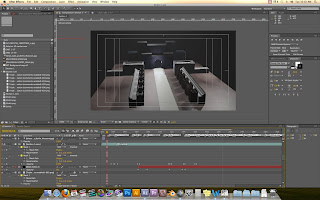
From Final Cut Pro 5 to Final Cut 7, I was a loyal Final Cut Studio user. It was an incredible, comprehensive program that allowed me to be very creative and productive. I'm not the only video production professional who based an entire business workflow off of this program; several companies have invested thousands or hundreds of thousands in Apple's Final Cut software. But now many businesses, like mine, are jumping ship from what we used to call home because of dramatic, unfavorable changes that Apple has made.
Many of my coworkers now use Adobe Creative Suite 5, including Premiere and After Effects for all their video needs. Of course, this is a very recent change. I was scared to switch, but I knew that Final Cut's future was very uncertain for video production professionals like me. I needed something that I knew was in the market for professionals, something that was adapting to the needs of professionals.
Final Cut is not adapting to the needs of professionals; instead, it is attempting to create its own standard for others without their input. I believe the biggest problem with Apple right now is that it is both not listening and not communicating to professionals. Final Cut X was so secret to its customers that you could literally find more top secret information from within the US government online than information about Final Cut X for quite some time. This prevented Apple from receiving constructive criticism early in the game to avoid the catastrophe they are now facing. For a good laugh and a realization of the negative reception of Final Cut X, go to the Apple App Store and look at the reviews—it's actually pretty sad.

Even without involving users in the "improvement" process, Apple completely went against common sense in literally making the new Final Cut a sure downgrade. How? They stripped out vital parts of Final Cut Studio, including the dedicated Color app. Leaving out Color alone is enough for me to completely doubt the sanity of Apple. Apple acquired the company that originally made the software behind color 5 years ago. The software was originally sold for $25,000 (see article here)!!! What was Apple thinking when it decided to throw away this asset that cost them so much?!
This isn't the first time Apple has made such a strange move. They also acquired a program called Shake, which for a time they sold for $5,000 and up. Now, for some reason, they abandoned it. It's like buying a new car and letting it collect dust in a dark garage. It appears Apple likes to turn valuable assets into liabilities. Perhaps the consumer marketplace for iPads and iPhones is blinding Apple to the people who depend on Apple for their professional applications.
While I'm not running away from Apple completely, they sure scared me away from Final Cut X. I'm not "upgrading" to that! Adobe feels more like home than the new Final Cut does. Apple continues to scare me with its direction towards arbitrary simplicity in its software, including OS X Lion. The new and "improved" Mac operating system now will not support many older applications that the previous version would, all because Apple didn't feel like including a previous feature. Most professionals that I know and I feel perplexed by Apple's recent moves if not betrayed. The status quo is changing. It's time for people who have been loyal to Apple's Final Cut Studio to move on, because there is no such thing as Final Cut Studio anymore. If Adobe isn't your style—for me it's fine—then consider Avid Media Composer or Sony Vegas. Either way, it's time for a change and to show Apple that we we will not compromise on what we want and need in our software.



